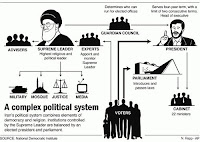36th Revolution anniversary in Iran
The Iranian
nation toppled the US-backed Pahlavi regime in 1979, ending virtually 2,500
years of monarchical rule, and will see nationwide rallies on Feb. 11, the
anniversary of the Islamic Revolution. In the 36 years since mass protests
deposed the monarchy in Iran, the country has struggled with immense
challenges. After the Islamic Republic's establishment by way of a popular
referendum, Iran endured a period of chaotic instability, with various armed
factions seeking to undermine the nascent government.
Any endeavors toward a speedy recovery, however, were thrashed by increased Western sanctions, as a clear and persistent strategy of coercion was seemingly put into full-throttle against Iran. Since then, Iran’s tensions with the West have unfortunately only further escalated, and the country has faced a more or less all-out economic war waged upon it, which has been complemented by numerous covert actions in the form of assassinations and bomb attacks and even cyberattacks.
Yet,
despite all of these crises, Iran has persevered. It emerged from the Iran-Iraq
War without giving up an inch of its soil in spite of the all-out support given
to the aggressor by the superpowers and even regional Arab countries. It also
did this without resorting to the use of chemical weapons, even as it had the
capability to do so, as the country is signatory to all weapons of mass
destruction conventions. Iran has since managed to become one of the rare
countries able to maintain its political-security independence and foster an
atmosphere of socio-economic self-reliance in a nation that was once so
incredibly dependent on outside powers.
Iran has also made many advances in the sciences as well: it has indigenously mastered the nuclear cycle and ranks in the top 10 countries in stem cell and cloning research; in the top 20 nations in nanotechnology, chemistry, medicine, computer science and mathematics; is the ninth country in the world with a full space program that successfully puts satellites into orbit; and is the first manufacturer in the world of eye bio-implants. Last but not least, Iran today is self-sufficient in building submarines, helicopters, fighter jets, missiles and tanks.
To be sure,
Iran has a long way to go on its road to developing a better society for all
Iranians. The human rights situation undoubtedly has room for ample
improvements. The country is also beset by corruption, with the vice president
in the Rouhani administration even saying the corruption “of the century”
occurred during the Ahmadinejad era. High levels of inflation,
unemployment and a bloated bureaucracy have also contributed to a “brain
drain,” or the emigration of many educated Iranians.
However, with all of its shortcomings, the Islamic Republic of Iran remains a political reality. It has firmly entrenched roots in Iran and now garners substantial geopolitical clout throughout the Middle East. After 36 years of overcoming what many thought were insurmountable obstacles, Iran has remained a strong and stable state. This is both testimony to impressive statecraft and demonstrates the necessity of a detente among the countries in the region, the West and this power that is here to stay.
By Hossein Mousavian




Comments